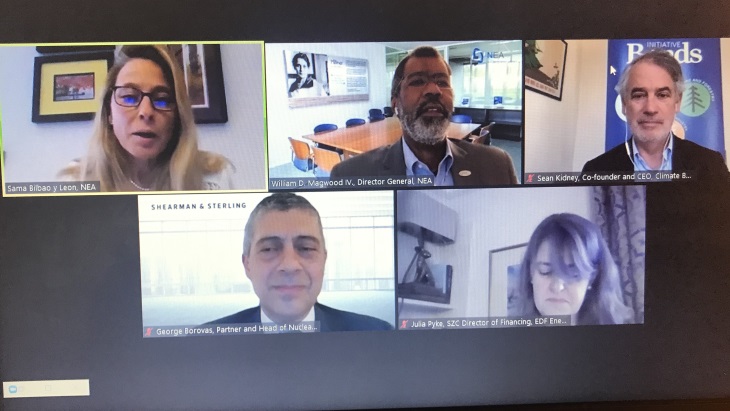This is the message of the last in a package of four Policy Briefs on the role of nuclear energy in the post-COVID economic recovery produced by the OECD Nuclear Energy Agency in collaboration with World Nuclear Association. They study cost-effectiveness, jobs, resilience and financing.
The NEA hosted a webinar yesterday to discuss the latest report, Unlocking financing for nuclear energy infrastructure, noting that OECD governments aim at an economic recovery that preserves the ambition for affordable energy transition plans and aligns with long-term economic, social and environmental objectives - the Paris Agreement and the UN Sustainable Development Goals.
Opening the webinar, NEA Director General William Magwood said: "The expectation that we are facing an economic crisis that can be 'quickly' dealt with over the next three years is unfortunately rather optimistic. The development of modern and resilient zero-carbon infrastructure may take a little longer. It's important to develop plans to incentivise investment in a lot of new low-carbon generation capacity, balancing it out with a realistic forecast in the growth in energy demand. It is important to use macroeconomic models with the right granularity to properly model the energy sector."
Beyond FOAK
Sama Bilbao y Leon, head of the NEA's Nuclear Technology Development and Economics division said that nuclear energy projects have been "misaligned" with traditional sources of capital. "Nuclear power plant construction is a complex infrastructure undertaking that can present significant financial risks since they are capital-intensive and have multi-decadal project lifetimes," she said, adding that there has been a "loss of confidence" due to delays and cost overruns in some recent Western first-of-a-kind (FOAK) projects.
The industry is moving beyond such challenges however and there are opportunities for very large cost reductions, she said.
"We have evidence from recent nuclear projects in China, Korea, Russia and the UAE that they can be completed on time and on budget. This means that the projects that we have experienced in Western FOAK projects are really not intrinsic to a nuclear power plant but are intrinsic to the project arrangement itself," she said. Design standardisation and a commitment to multi-unit serial construction programmes are going to be essential to securing lower costs for new units, she added.
Governments can support financing through a range of mechanisms.
Direct financial support includes equity, debt, export credit agencies, and loan guarantees. "An equity stake can be transitional as additional sources of financing should become available once the plant is operational," she said.
Indirect financial support includes power purchasing agreements (PPAs), such as the Contract-for-Difference in the UK and the Mankala model in Finland, and regulated assets, such as the rate-of-return in the USA and the regulated asset base in the UK. "PPAs focus on market risks but often do not address explicitly construction risk," she said. "For the regulated asset approach, conditions can be specified for the allocation of certain risks, such as cost sharing and a cap with a hybrid RAB model," she said.
Government ownership of infrastructure projects will have an "enormous impact" because it would "inspire confidence among private investors and would also send a very important signal to society as a whole", she said.
"Transitional, targeted government support for nuclear energy projects will be indispensable to unlock the benefits of nuclear energy in the post-COVID-19 economic recovery. There’s a window of opportunity for governments to support sustained cost reductions in nuclear energy projects through timely new build decisions," she said.
The other three Policy Briefs are: Building low-carbon resilient electricity infrastructures with nuclear power; The role of nuclear energy in the cost-effective decarbonisation of electricity systems; and Creating high-value jobs in the post-COVID-19 recovery with nuclear energy projects.





_91467.jpg)
_47120.jpg)
_16439.jpg)






